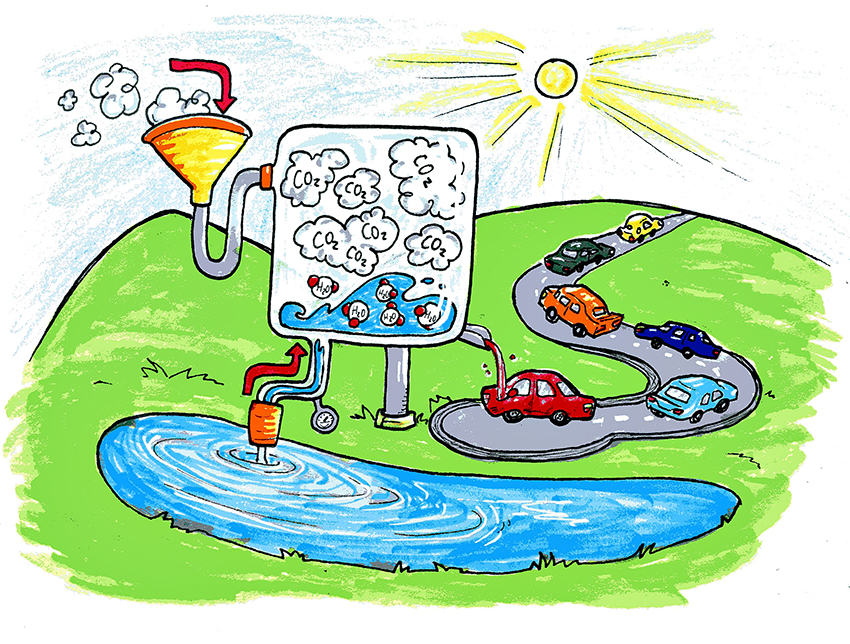Researchers at the University of Texas at Arlington have found a one-step conversion process that transforms carbon dioxide and water into hydrocarbon fuels.
Though it is in its early stages, this new, solar-powered process has the potential to both eliminate pollution and create more renewable energy.
Frederick MacDonnell, UTA chemistry professor and co-lead investigator for this project, said that this process is unique because of its simplicity and effectiveness.
“Scientists have been converting carbon dioxide into things like methane and methanyl for years, but our breakthrough was that we were able to convert a significant portion of carbon dioxide into things that are already transportation fuels,” MacDonnell said.
Brian Dennis, UTA professor of mechanical engineering and the other co-lead investigator, said that producing liquid hydrocarbon fuels is especially beneficial, since the current infrastructure is already set up to handle them.
“If you can store the energy of the sun in hydrocarbons like gasoline, you are using equipment that we are already set up to use,” Dennis said. “The goal is to get as much energy into that liquid hydrocarbon form as possible.”
Dennis compares the process he and MacDonnell have developed to the process of making biodiesel fuels. Dennis said that this process takes in carbon dioxide and water and sunlight facilitates the reaction, similarly to trees. While a biological process transform leaves into ethanol and biodiesels, this conversion process takes a photochemical approach.
“We have a catalyst and metal and glass,” Dennis said. “We are doing it in a synthetic way.”
This conversion process requires light, heat and high pressure. The team anticipates that solar power can provide this light and heat. Both Dennis and MacDonnell said the most difficult part was the construction of the reactor. Their reaction required high temperatures and pressures, while most photochemical work is completed at atmospheric pressure and room temperature.
“The issue is that to have a reactor that can both hold those high pressures and temperatures and be optically clear to allow light in, you actually have to design and build something special,” Dennis said.
The team has built one successful reactor out of quartz, but is already planning an updated model that allows for even higher pressures. Though the team has proven this conversion process works, they continue trying to make the process more efficient.
“We have demonstrated the chemical reaction and did something that a lot of people thought couldn’t work or didn’t exist,” Dennis said. “We have shown that it can be done, but we only make very small amounts of product per day.”
Thomas Edgar, director of the UT Energy Institute , said that the science and ideas behind this process are well-founded, but that the team will have to focus on financial considerations to implement the process.
“The problem becomes what this process is going to cost, whether or not they will be able to come up with an economic way of doing it, and then what this process will compete against in energy markets,” Edgar said.
While this method is far from commercial use, MacDonnell said that it is a step in the right direction.
“We have a six month old baby and people are asking us how good at sports he is gonna be,” Macdonnell said. “We have shown people something they didn’t know existed, so we have opened a whole new area of research."















